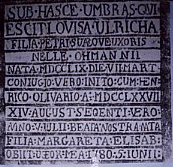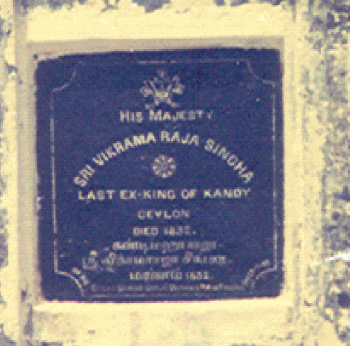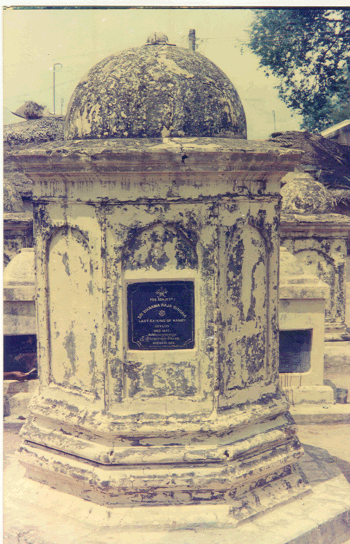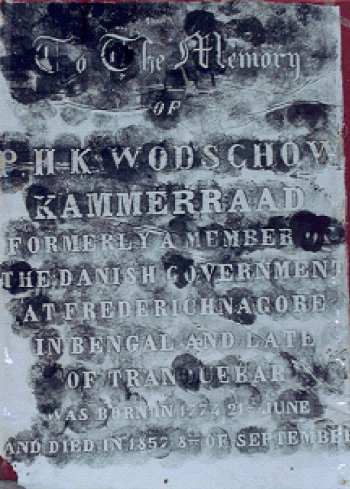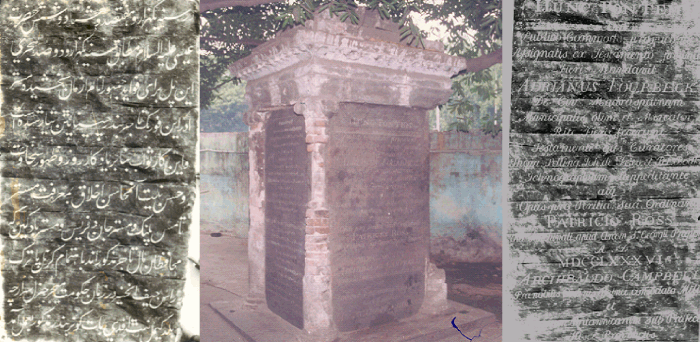European Inscriptions
Inscriptions in European languages like Portuguese, Danish, Dutch, French, Latin, Greek, Armenian and English are found in Tamil Nadu. They are mostly found on tombs, churches, forts and statues and they serve as remnants of the age of the European East India Companies. Portuguese inscription is found in Luz Church, Mylapore. It belongs to the year 1516 CE. The St.Thomas’ Contonment Church at Parangimalai near Chennai has a graveyard containing the Portuguese cemetery.
St.Marys church situated in the Fort St.George and the Santhome Church, Chennai contain cemeteries with inscriptions in English, and Latin. There are Dutch tomb stones at Palaverkadu (Pulicat), Chaturangappattinam (Sadras), and Nagappattinam.The tombstone of De Lannoy's, the Belgian who was earlier the Dutch Captain, and who later served under Marthandavarma and Ramavarma, the Travancore kings for 36 years and died in 1777 CE, is situated inside the Udayagiri fort in Kanyakumari District.
The tombstone of De Lannoy's, the Belgian who was earlier the Dutch Captain, and who later served under Marthandavarma and Ramavarma, the Travancore kings for 36 years and died in 1777 CE, is situated inside the Udayagiri fort in Kanyakumari District. The mortal remains of his wife and son were also interred here. All the tombstones contain epitaphs in Latin and Tamil. Another tombstone with epitaphs in Latin and Tamil is of Petrus Flory, lieutenant of the Travancore army, who died in 1780 CE. There are three other tombstones containing epitaphs in English and Tamil belonging to the years 1803, 1811 and 1812-13. All the tombstones are being protected by Tamil Nadu State Department of Archaeology.
The tombstone of Edvard Bulkley, a physician in the service of the British East India Company, is situated opposite to the Madras Medical College, near the Fort Railway Station, Chennai. The inscription engraved on the tombstone is in Latin, and belongs to the year 1714 CE.
The bridge at Saidapet, Chennai across the river Adyar was constructed in 1726 CE by Petrus Uscan, an Armenian merchant, and the inscription recording its erection is embedded on the north eastern side of the rampart of the bridge. In 1786, a bridge was constructed across a brook flowing near the present day Veterinary hospital at Saidapet. The obelisk erected nearby, stands inside the present day Highways Department campus. The inscription embedded on the obelisk proclaims about the construction of the bridge in English, Latin, Persian and Tamil. It is a protected monument with the State Archaeology Department.
Due to the impact of the Jesuit missionaries, Portuguese language was used along with Tamil for writing documents and engraving inscriptions. This practice was in vogue upto the 19th century in Tuttukkudi, as can be seen in the tombstone of Don Gaberiel De Cruz Waz Gomes, who died in the year 1808 CE. This tombstone is lying inside the campus of the Ornallos School, Tuttukkudi.
When we take stock of the inscribed tombstones of Europeans, both missionaries as well as civil and military servants, it would be inappropriate to omit the name of Francis White Ellis, who served as the Collector of Madras in the beginning of the 19th century CE. He mastered Tamil and translated Tirukkural into English. He died at Ramanathapuram and his graveyard is located at Dindigul. It contains inscriptions in Tamil and English.


